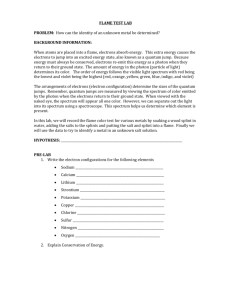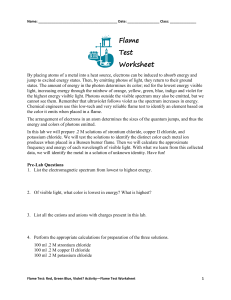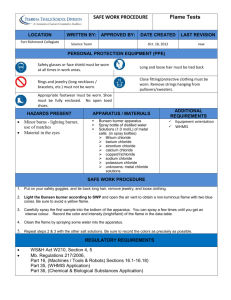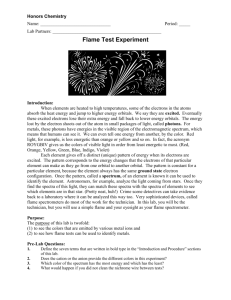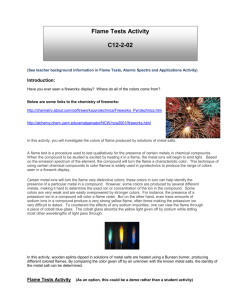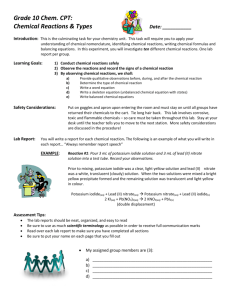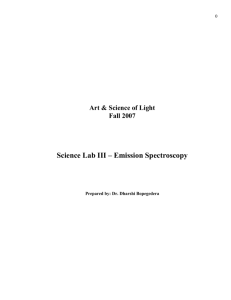labsnactivtysch3u
advertisement
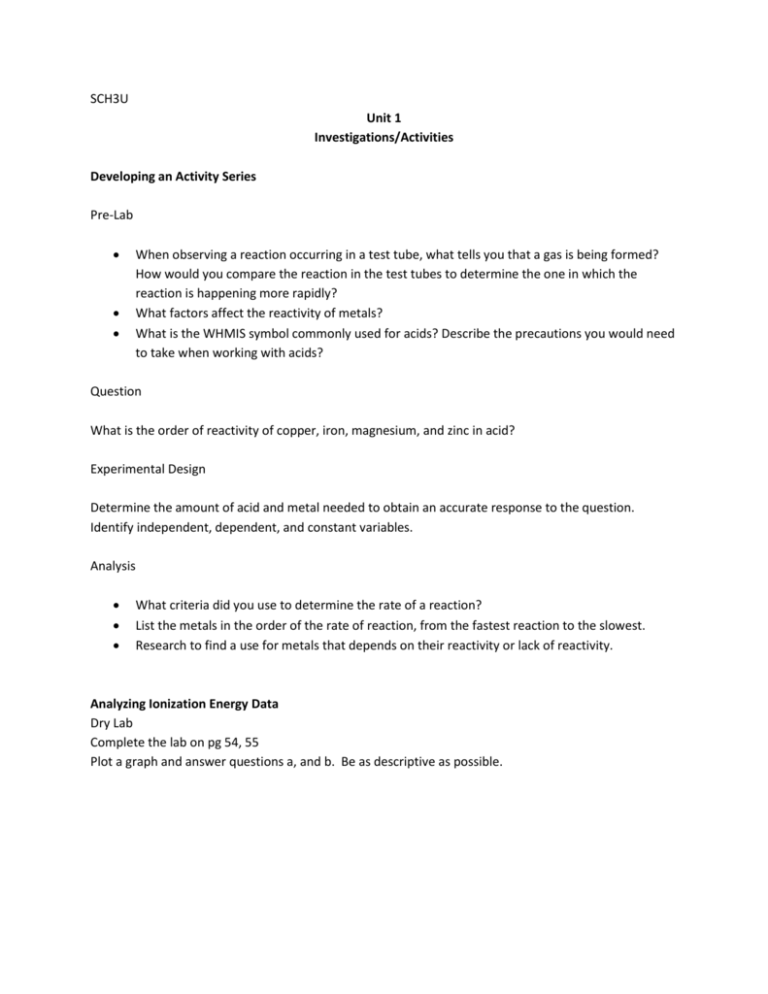
SCH3U Unit 1 Investigations/Activities Developing an Activity Series Pre-Lab When observing a reaction occurring in a test tube, what tells you that a gas is being formed? How would you compare the reaction in the test tubes to determine the one in which the reaction is happening more rapidly? What factors affect the reactivity of metals? What is the WHMIS symbol commonly used for acids? Describe the precautions you would need to take when working with acids? Question What is the order of reactivity of copper, iron, magnesium, and zinc in acid? Experimental Design Determine the amount of acid and metal needed to obtain an accurate response to the question. Identify independent, dependent, and constant variables. Analysis What criteria did you use to determine the rate of a reaction? List the metals in the order of the rate of reaction, from the fastest reaction to the slowest. Research to find a use for metals that depends on their reactivity or lack of reactivity. Analyzing Ionization Energy Data Dry Lab Complete the lab on pg 54, 55 Plot a graph and answer questions a, and b. Be as descriptive as possible. Molecular Models Activity Using a Molecular Model Kit form the following compounds, and draw the Lewis structures: Hydrogen to hydrogen Oxygen to two hydrogen’s Nitrogen to three hydrogen’s Carbon to four chlorines Nitrogen to nitrogen Carbon to two oxygen’s Create 5 of your own structures a. Which of the molecules required double or triple covalent bonds? Why? b. Which of the molecules would you expect to be polar? Lab Flame Test A flame test is a procedure used to test qualitatively for the presence of certain metals in chemical compounds. When the compound to be studied is excited by heating it in a flame, the metal ions will begin to emit light. Based on the emission spectrum of the element, the compound will turn the flame a characteristic color. This technique of using certain chemical compounds to color flames is widely used in pyrotechnics to produce the range of colors seen in a firework display. Certain metal ions will turn the flame very distinctive colors; these colors in turn can help identify the presence of a particular metal in a compound. However, some colors are produced by several different metals, making it hard to determine the exact ion or concentration of the ion in the compound. Some colors are very weak and are easily overpowered by stronger colors. For instance, the presence of a potassium ion in a compound will color a flame violet. But on the other hand, even trace amounts of sodium ions in a compound produce a very strong yellow flame, often times making the potassium ion very difficult to detect. To counteract the effects of any sodium impurities, one can view the flame through a piece of cobalt blue glass. The cobalt glass absorbs the yellow light given off by sodium while letting most other wavelengths of light pass through. Question: Will the charge of the metal or the bond to a halogen or nitrate change the ability to identify an element? Does the colour change when a solution is prepared for the metal? Materials: Bunsen burner Nichrome wire Solutions (1.0 mol/L) of the following metal salts o Barium chloride/nitrate o o o o o o o o o Calcium chloride/nitrate Copper (I) chloride, copper (II) chloride, copper (II) nitrate Iron (II) chloride, iron (III) chloride/nitrate Lead (II) chloride/nitrate Lithium chloride/nitrate Potassium chloride/nitrate Sodium chloride/nitrate Strontium chloride/nitrate 2 unknown solutions Experimental Design Using the nichrome wire loop you will dip it into the powder or solutions to test for the colour, produced by moving electrons within the atom. Between uses rinse the nichrome wire with distilled water and then dip into a solution of hydrochloric acid; briefly heat in the flame and test another sample. Create a data table. Analysis 1. 2. 3. 4. 5. 6. 7. 8. 9. 10. List the colors observed in this lab from the highest energy to the lowest energy. List the colors observed in this lab from the highest frequency to the lowest frequency. List the colors observed in this lab from the shortest wavelength to the longest wavelength. What is the relationship between energy, frequency, and wavelength? Based on the results of your experiment, what metal was found in the unknown? Explain. Do you think we can use the flame test to determine the identity of unknowns in a mixture? Why or why not? How are electrons “excited” in this experiment? What does it mean when the electrons are “excited”? Why do different chemicals emit different colors of light? Why do you think the chemicals have to be heated in the flame first before the coloured light is emitted? Colourful light emissions are applicable to everyday life. Where else have you observed colourful light emissions? Are these light emission applications related? Explain. Symbol Element Color As Arsenic Blue B Boron Bright green Ba Barium Pale/Yellowish Green Ca Calcium Orange to red Cs Cesium Blue Cu(I Copper(I) Blue Cu(II) Copper(II) non-halide Green Cu(II) Copper(II) halide Blue-green Fe Iron Gold In Indium Blue K Potassium Lilac to red Li Lithium Magenta to carmine Mg Magnesium Bright white Mn(II) Manganese(II) Yellowish green Mo Molybdenum Yellowish green Na Sodium Intense yellow P Phosphorus Pale bluish green Pb Lead Blue Rb Rubidium Red to purple-red Sb Antimony Pale green Se Selenium Azure blue Sr Strontium Crimson Te Tellurium Pale green Tl Thallium Pure green Zn Zinc Bluish green to whitish green


